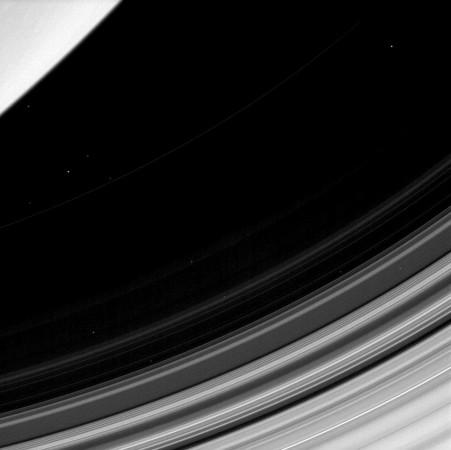
NASA's Cassini spacecraft completed its sixth dive between Saturn and its rings on May 28.
Also Read: NASA fast-tracks mission to explore mysterious metal-rich asteroid
It has been described as one of the most dangerous plunging so far as the spacecraft dived directly through the D ring of the ringed planet which is exceedingly faint and located at the closest proximity.
The researchers revealed that they were not sure if the region between the rings and Saturn would be clear of debris or not, Space.com reported.
NASA's Grand Finale Orbit Guide reveals that this hazardous dive was the first out of the four paths through the planet's inmost ring which is going to be the deepest and dustiest loop the spacecraft will go through.
This plunge was made by the spacecraft at 10.22 am EDT (7.52 pm May 28) and the astronomers expect to hear back from the spacecraft once it is back in contact with Earth by 11.29 pm EDT (8.59 am on May 29 GMT).
The astronomers have also identified six-minute period when the spacecraft will be bumping into the particles present between the rings. The Radio and Plasma Wave Science (RPWS) instrument of the spacecraft would identify the plasma released by the clouds when the antenna dish is hit by the particles.

The instrument sticks out of the dish, letting it take stock of particles while the rest of the craft is protected, the guide stated.
The spacecraft is a collaboration between NASA, European Space Agency and Italian Space Agency. It has been capturing images of the edge of Saturn's A and F rings and the gap present between them to explore more about the structure of the rings as well as the way their particles interact.
So far, Cassini has dived through and scanned the outer edge of Saturn's A ring and also flown through the C ring in the first of a three-part radio-wave experiment.
The spacecraft's latest mission is to explore the D ring of the ringed planet. Cassini would have two more opportunities post this plunge to explore the innermost ring and get more data about this planet.
Cassini will commence the final phase of its Grand Finale mission once it completes its 22 ring dives. The spacecraft would have a controlled fall into Saturn's atmosphere on September 15, which is likely to be the most fatal dive for the spacecraft. The spacecraft will keep transmitting data back till it gets burnt and destroyed.












!['Had denied Housefull franchise as they wanted me to wear a bikini': Tia Bajpai on turning down bold scripts [Exclusive]](https://data1.ibtimes.co.in/en/full/806605/had-denied-housefull-franchise-they-wanted-me-wear-bikini-tia-bajpai-turning-down-bold.png?w=220&h=138)
![Nayanthara and Dhanush ignore each other as they attend wedding amid feud over Nayanthara's Netflix documentary row [Watch]](https://data1.ibtimes.co.in/en/full/806599/nayanthara-dhanush-ignore-each-other-they-attend-wedding-amid-feud-over-nayantharas-netflix.jpg?w=220&h=138)



